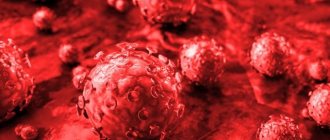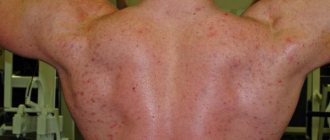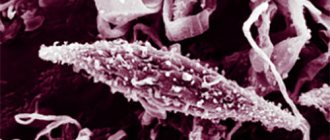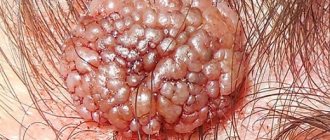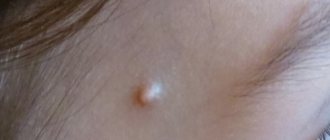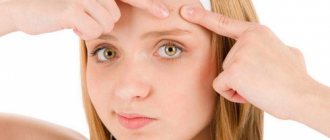Excessive sweating is a very unpleasant condition that causes discomfort and a lot of inconvenience in a person. What to do with excessive sweating or, as doctors call it, hyperhidrosis, when all parts of the body and even the palms sweat. Just imagine how difficult it is to live with constantly cold, wet hands, with a problem that may also be accompanied by an unpleasant odor, a rash, or, even worse, boils. People suffering from excessive sweating of their palms begin to feel embarrassed to shake hands with people they know, they have difficulty performing professional duties, they find it difficult to drive a car or hold certain objects. In addition, they are often forced to carry scarves or towels with them to wipe off sweat. Hyperhidrosis can easily give a person complexes in communicating with other people and greatly complicate his life. Let's talk about the causes of excessive sweating and how to get rid of excessive sweating of the hands forever.
General information
Palmar or palmar hyperhidrosis is the most common type of local hyperhidrosis (observed in 80% of patients). In this case, sweating of the palms is often combined with sweating of the feet.
The pathology usually manifests itself during puberty, actively manifests itself until the age of 40 and gradually regresses in old age. This problem is more often observed in women.
Since severe sweating of the palms not only affects the psychological state of the patient, but also significantly limits the choice of profession, the treatment of this disease in some countries (Great Britain, Italy, etc.) is covered by health insurance.
Excessive sweating of a local nature is usually caused by less serious disorders than with the development of generalized hyperhidrosis, but this type of sweating is often the cause of social maladjustment, low self-esteem and a depressed state.
Sweaty palms are a serious obstacle to dating, career and personal life.
How to get rid of sweaty hands and what foods to avoid
Now that we've laid out some foods that are anti-sweat, let's look at the ones you should definitely avoid to save that inevitable handshake.
Alcohol
The more you drink, the more you sweat, and a sweaty body means sweaty hands. Alcohol can dilate blood vessels, making your body hotter and causing you to sweat. So try to reduce your alcohol consumption to avoid sweaty hands and an overall healthy body.
Processed, high-calorie and salty foods
This type of food is the biggest culprit not only for sweat but also for a bunch of other health problems. Your body has to work crazy hard to process things like fast food, which is usually highly refined and packed with sodium.
Since it will take double the digestion time, your body will start producing sweat as a result. I'm totally guilty of craving a burger and chips at 1am, but try to avoid such foods if you want a healthy system and dry hands.
Kinds
Increased sweating of the hands can be:
- Primary (essential type). Occurs for an unknown reason. It may be associated with an increased number of sweat glands in the palms or with the peculiarities of their innervation, and develop with high sensitivity to the level of adrenaline in the blood. According to the existing hypothesis, hereditary factors are involved in the development of pathology (in approximately 40% of patients, this type of hyperhidrosis is present in one of the parents).
- Secondary, caused by hereditary diseases and other disorders.
The degree of manifestation of increased sweating can be:
- light if the palms become a little damp, but no drops of sweat are observed;
- moderate, if sweating also affects the fingers;
- severe if sweat beads on your palms and fingers.
The simultaneous sweating of the hands and feet is called distal hyperhidrosis.
Folk remedies
At home, you can reduce sweat production, and with an integrated approach, patients with secondary hyperhidrosis can eradicate the problem.
Herbal cream
One of the folk remedies - you can make your own herbal cream
To prepare you will need:
- plantain;
- calendula;
- dandelion;
- nettle.
How to do:
- mix herbs in equal proportions;
- 1 tbsp. l. pour a glass of boiling water over the mixture;
- leave for 40 minutes;
- 2 tbsp. l. mix the infusion with 50 g of animal fat;
- add 1 tbsp. honey, castor oil (2 tsp);
- to stir thoroughly.
Apply the product 2 times a day to dry, clean hands.
Ammonia solution
Rubbing with a solution of ammonia helps combat sweaty hands. Ingredients:
- 1 liter of water;
- 1 tbsp. l. ammonia or strong tea;
- lemon juice;
- sage (2 tbsp chopped leaves).
Mix the ingredients, dip a cloth in the solution, wrap your palms in the cloth, and leave for a few minutes. Remove the compress, dry your hands and sprinkle them with talc/powder.
Oak bark infusion
Sea salt baths dry the skin and reduce sweating
If your palms sweat, an infusion of oak bark will help you avoid this unpleasant phenomenon. For cooking you will need 3 tbsp. l. crushed bark and 1 liter of boiling water. Mix the ingredients, leave for half an hour, cool. Several times a day, immerse your palms in the composition for 10 minutes. Oak bark tightens pores, strengthens and tones the skin.
Apple vinegar
A weak solution of apple cider vinegar works well to eliminate sweating. Components:
- water – 0.5 l;
- apple cider vinegar – 5 tbsp. l.
You need to dilute vinegar in hot water. When the composition has cooled to a temperature that is pleasant to the skin, immerse your hands in it for 20 minutes. Do the procedure twice a day.
The minimum course of treatment with folk remedies is 20 days.
Causes
Hyperhidrosis of the palms can be caused by:
- Increased activity of the sympathetic nervous system, which is the most common cause of increased sweating in the palms and often accompanies the patient throughout life. The influence of the sympathetic nervous system on sweating may be due to an increase in hormone levels in the blood.
- Genetic diseases and defects.
- Hormonal imbalances.
- Taking certain medications.
Sweaty palms are typical for genetic diseases such as:
- Touraine's polykeratosis, in which, in addition to local palmoplantar or palmar hyperhidrosis, there is thickening of the nail plates or their deformation like bird's claws, dry skin, ichthyosiform erythroderma (scales appear on the skin, similar in appearance to fish scales), keratosis pilaris (keratinization of the upper layer of the skin) , hypotrichosis (baldness), hypoplasia, dental dystrophy and other anomalies.
- Brunauer syndrome, which is characterized by thickening of the skin of the palms and soles, excessive sweating in this area and a “Gothic” palate. Inherited in an autosomal dominant manner.
- Weir-Mitchell erythromelalgia, which is a form of angiotrophoneurosis. Associated with vegetative-vascular disorders in the peripheral parts of the extremities, occurring in a paralytic manner. It may be a consequence of overheating or frostbite, trauma, hypertension, polycythemia, thyroid pathologies, systemic diseases and pathologies of internal organs.
In addition, sweaty hands can occur when:
- Psoriasis is a chronic (presumably autoimmune) disease characterized by the formation of dry, raised red plaques above the skin. Profuse sweating is observed in the area of the skin lesion. Since plaques can appear on the palms of the hands, psoriasis can cause sweating in this area.
- Blue (blue) nevus. This melanocytic nevus occurs when there is a large accumulation of melanin-producing cells deep in the dermis. It is located in most cases on the limbs and buttocks and is accompanied by local sweating.
- Vitiligo is a pigmentation disorder in which the melanin pigment disappears and white spots appear on the skin. In the area of white spots (located on any part of the body), profuse sweating may occur.
- Cassirer's acroasphyxia is a paroxysmal cardiovascular disorder that usually manifests itself in childhood and is accompanied by acroasphyxia, acrocyanosis, cold hyperesthesia and sweating of the distal extremities, atrophy or hypertrophy, and sensory disturbances.
- Polyneuropathy. Sweating is caused by a violation of the nervous regulation of the activity of the sweat glands due to changes in the nerve fibers.
To diagnose palmar hyperhidrosis, the iodine-starch test (minor test) is used.
Diagnostics
Effective treatment cannot be prescribed without identifying the cause of the disease. Therefore, a number of analyzes are required:
- determination of the level of T3 and T4 in the body;
- Ultrasound of the thyroid gland;
- general blood analysis;
- fluorography;
- biochemical blood test, including glucose.
After a comprehensive examination, the doctor draws conclusions whether a person’s hyperhidrosis is physiological or pathological. In the second case, the detected diagnosis is made and the necessary treatment is selected.
How to deal with sweating
Since hyperhidrosis of the palms is most often idiopathic in nature, to eliminate the pathology at the initial stage of treatment the following is used:
- Antiperspirants that are applied to the problem area. The effectiveness of these remedies for hyperhidrosis depends on the amount of aluminum contained and the correct use of antiperspirants.
- Formagel is an effective remedy for sweaty hands, which contains formaldehyde, which has a tanning effect.
- Teymurov's paste is a multi-component antiseptic, the use of which requires consultation with a doctor, as it can cause side effects with prolonged use.
You can also turn to folk remedies. You can read how to get rid of sweaty palms using herbal decoctions here.
You can make an appointment with a doctor by phone
8-(4822)-33-00-33
or using the online registration system on the website
Make an appointment with a doctor
If there are no objective reasons for excessive sweating, they look for pathological causes of hyperhidrosis of the palms. These include:
- endocrine disorders, including hormonal imbalance;
- infectious diseases;
- hereditary pathologies;
- mental illness.
Physiological hyperhidrosis does not require drug correction. It occurs in response to external stimuli and goes away as soon as they stop affecting the body. Pathological sweating is not only an inconvenience, but also a symptom of serious diseases. Therefore, this condition should not be ignored and hope for independent recovery.
Physiotherapeutic and surgical treatment
Since severe hyperhidrosis of the palms is difficult to treat with local remedies, patients are advised to:
- Iontophoresis is the effect of electric current passed through water on the palms, which gives a positive effect in 83% of cases. Because the sweat glands are blocked for several weeks, the procedure requires repetition.
- Botox injections are the injection of botulinum toxin drugs that block the sweat glands for 9-8 months.
- Sympathectomy is a radical and effective treatment method, which is used in the absence of a positive reaction to other methods of therapy.
Botox is an effective remedy for eliminating sweaty palms.
You can find out more about how you can get rid of sweaty hands using the methods listed above here.


